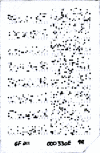Cross-species hybridisation of pig RNA to human nylon microarrays
- PMID: 12354330
- PMCID: PMC130049
- DOI: 10.1186/1471-2164-3-27
Cross-species hybridisation of pig RNA to human nylon microarrays
Abstract
Background: The objective of this research was to investigate the reproducibility of cross-species microarray hybridisation. Comparisons between same- and cross-species hybridisations were also made. Nine hybridisations between a single pig skeletal muscle RNA sample and three human cDNA nylon microarrays were completed. Three replicate hybridisations of two different amounts of pig RNA, and of human skeletal muscle RNA were completed on three additional microarrays.
Results: Reproducibility of microarray hybridisations of pig cDNA to human microarrays was high, as determined by Spearman and Pearson correlation coefficients and a Kappa statistic. Variability among replicate hybridisations was similar for human and pig data, indicating the reproducibility of results were not compromised in cross-species hybridisations. The concordance between data generated from hybridisations using pig and human skeletal muscle RNA was high, further supporting the use of human microarrays for the analysis of gene expression in the pig. No systematic effect of stripping and re-using nylon microarrays was found, and variability across microarrays was minimal.
Conclusion: The majority of genes generated highly reproducible data in cross-species microarray hybridisations, although approximately 6% were identified as highly variable. Experimental designs that include at least three replicate hybridisations for each experimental treatment will enable the variability of individual genes to be considered appropriately. The use of cross-species microarray analysis looks promising. However, additional validation is needed to determine the specificity of cross-species hybridisations, and the validity of results.
Figures







References
-
- Schena M, Shalon D, Davis RW, Brown PO. Quantitative monitoring of gene expression patterns with a complementary DNA microarray. Science. 1995;270:467–470. - PubMed
-
- Welsh JB, Zarrinkar PP, Sapinoso LM, Kern SG, Behling CA, Monk BJ, Lockhart DJ, Burger RA, Hampton GM. Analysis of gene expression profiles in normal and neoplastic ovarian tissue samples identifies candidate molecular markers of epithelial ovarian cancer. Proc Natl Acad Sci, USA. 2001;98:1176–1181. doi: 10.1073/pnas.98.3.1176. - DOI - PMC - PubMed
LinkOut - more resources
Full Text Sources
Other Literature Sources

